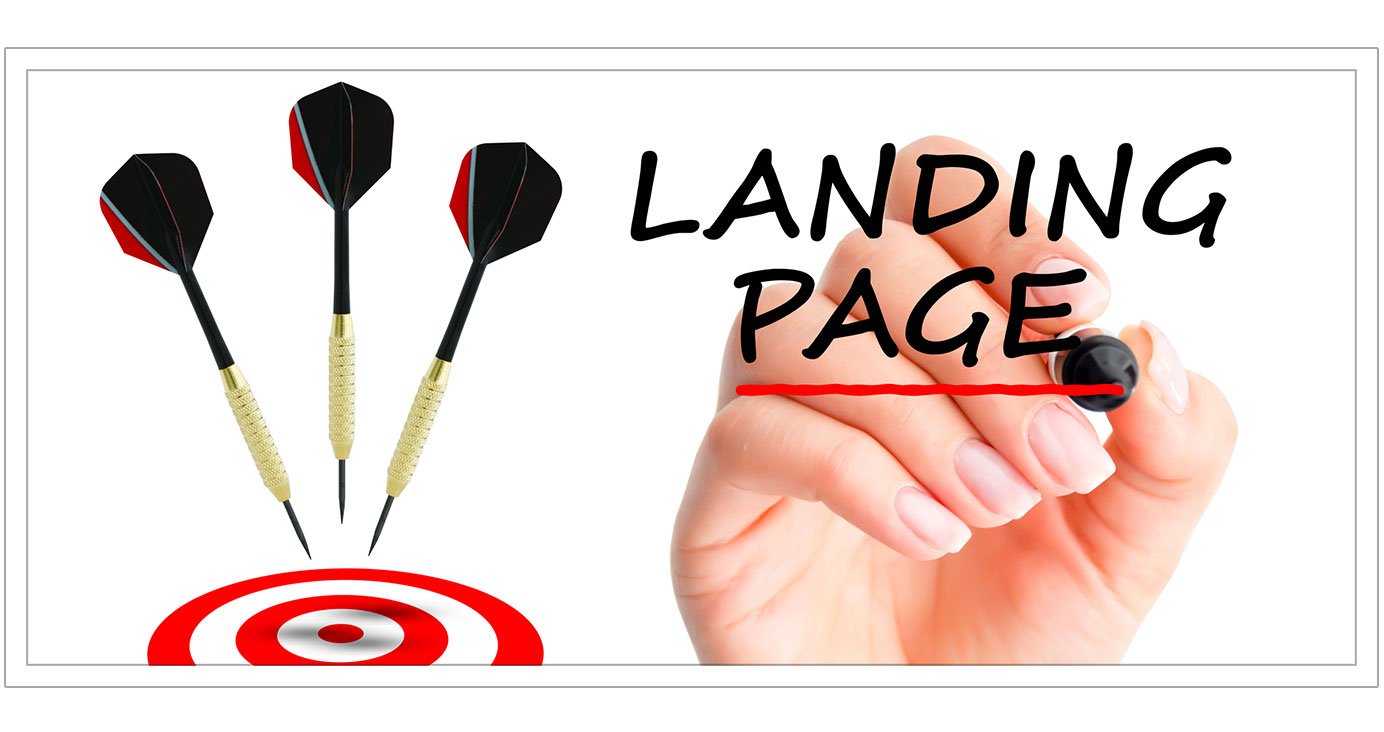You’ve got a visually pleasing, attention-grabbing PPC ad with lots of clicks, but you’re not seeing leads and conversions. What happened?
It could be you’ve forgotten that a successful PPC campaign doesn’t end with the ad. In fact, the ad is just one step in the strategy of hooking your audience and fulfilling your campaign objective. A strong PPC strategy includes a great landing page.
This is the second post in a two part series covering what I call the pre-click and post-click PPC strategies. In part one, I talked about the 6 pre-click things you need to do to ensure you’ve set up your PPC campaign for maximum clicks and exposure.
In this post I’ll be covering the post-click PPC strategy: 6 tactics to optimize your landing page.
After the Click

The best post-click tactic is to create a great landing page to capture leads or conversions.
Think of your ad and your landing page as a team. They need to work together and play the same game with the same goals. The landing page should not be thought of as a player who sits on the sidelines.
The ad is the player that catches the ball and throws it to its landing page teammate. A bad landing page makes for a dropped ball and a missed goal.
These post-click tips will help you learn how to hit the PPC ball out of the park.
6 Tactics to Optimize Your Landing Page

A stellar landing page is how you can gain leads after visitors have clicked on your ad. A bad landing page can scare visitors away even if your ad is amazing.
What makes for a great landing page?
1. Speak to Visitor Intent
To create a landing page that speaks to the intent of your visitor, you need to understand why your visitor clicked on your ad.
For example, say your company sells a variety of pool-related services and supplies. You’ve run a Facebook ad for your pool cleaning services. But since you also offer pool remodeling services, you decide that when people click on your ad for pool cleaning, you’ll send them to a landing page to upsell visitors with your pool remodeling services.
Bad idea. Why? A landing page about pool remodeling doesn’t speak to the visitor’s intent when they clicked on your ad about pool cleaning. They wanted to learn more about cleaning their pool, not remodeling it.
In this example you would need to create a separate landing page for your remodeling services. If you have a variety of services or products that you’re trying to promote, you need to create different landing pages.
2. Design with a Mobile-First Mentality
More than half of Facebook users only access Facebook on their phone. That means the landing pages for your ads need to be mobile-friendly, especially if you’re using Facebook ads.
People will immediately click off of your site on their phones if it’s not mobile friendly. If you don’t have a mobile-friendly landing page, you’re not speaking to the 934 million mobile daily active users.
One way to optimize for mobile is by making your phone number clickable on your landing page. Click-to-call phone numbers are key to making your page easy to use. Easy to use means more leads and conversions.
3. Create Strong and Clear Calls-to-Action (CTAs)

Make it very clear what you want your visitors to do. If you’re promoting a free webinar, make your CTA reflect exactly that, and only that. For example, if your webinar is about teaching people how to perform acupressure on themselves, your CTA could say “Learn Acupressure.”
Don’t have multiple CTAs on your page. A landing page with multiple CTAs such as, “Sign up Here,” “Learn More,” and “Buy Now,” will confuse visitors. Confused visitors don’t take action, which is what you want them to do.
4. Make it Visually-Pleasing
Make your landing page simple and visually-pleasing. Remove any images or extraneous information from your landing page that would be distracting or confusing for your visitors.
For example, if you’re selling surfboards, a picture of you and your dog would be visually distracting for visitors. (Unless, of course, your picture is of you surfing with your dog, which would be amazing.)
Another way to lessen any distractions is by not having a navigation bar on your landing page. You’re not wanting to direct people to other parts of your website with a navigation bar. You want them to stay on your page and take the desired action you’ve specified in your CTA.
Make your landing page images and copy clean and pleasing to the eye.
5. Be Consistent with Copy and Visuals
Remember how I said your landing page and ad are like players on the same team? To be on the same team, they need to have consistent messaging with with design and copy.
Consistent messaging drives home what you’re offering and what you want visitors to do. It also assures visitors they didn’t land on a rogue site pretending to offer them something when it’s actually spam or a switch-and-bait offer.
To be consistent, the landing page images and design need to match the ad. The image in the ad needs to be the main image visitors see when they land on your page.
From the headline to the CTA to the main messaging and key points, your copy in both the page and the ad need to be consistent, and in some cases, match exactly.
Your headline in the ad copy and landing page should be the same.
Your ad CTA and landing page CTA need to match. For example, if your ad is for a yoga studio with the CTA “Get My Free Class,” your landing page CTA needs to be “Get My Free Class” – not “Learn to Be a Yoga Teacher.”
6. Keep Forms Short and Simple
The seemingly-smallest thing can make a visitor bounce, and forms are a prime example. You could have a great ad and landing page with strong, clear and consistent messaging, but a form that’s too long can drive people away.
Make any forms you want people to fill out short and simple. You want it to be quick and easy for people to give you info. Don’t ask for extraneous info you don’t need or people wouldn’t be comfortable giving.
For example, if you’re collecting leads with an email address, don’t ask for information that would make people leery or would take too long to fill out, like asking for a physical address or a lot of extra details like household income, height, or gender.
Hitting It Out of the Park
A bad landing page can annoy or scare away visitors and make your ad much less effective. A great ad needs an equally great landing page with clear, consistent messaging.
What would you like to learn more about? Let me know your thoughts in the comments.
Related Posts
- Top 10 Landing Page Design Examples That Convert
- The Ultimate Guide on Creating a Facebook Ads Strategy in 2023
- Facebook Ads Best Practices In 2023
- How To Create an Effective Landing Page for Facebook Ads
- How To Optimize Facebook Ads for The Highest ROI
- 15 Landing Page Copywriting Tips to Boost Your Rates and Results
- Facebook Ads for Small Businesses: The Most Bang For Your Buck
- Facebook Ads vs Boosted Posts: Which Is Better For You?
- What Is The Difference Between PPC and SEM?
- The Facebook-Ad Checklist to Review Before Launching Any Campaign
- Are Facebook Ads Worth it? Pros and Cons of Facebook Ads
- PC Audit Handbook: How to Analyze Your PPC Campaigns
- The Best PPC Tools of 2022, As Told by PPC Experts
- What is a Good ROAS for Facebook Ads?
- How to Write FaceBook Ad Copy That Sells
- Beginner’s Guide to UTM Tags & Tracking
- WordPress vs Unbounce: What’s Best for Landing Pages?
- Generate Leads with Facebook Lead Ads
- Cost-per-click vs. cost-per-acquisition: Are you tracking the right PPC metrics?
- Facebook Business Manager Overview
- Landing Page Underperforming?
Check Your Offer.
Leave a Reply
You must be logged in to post a comment.




